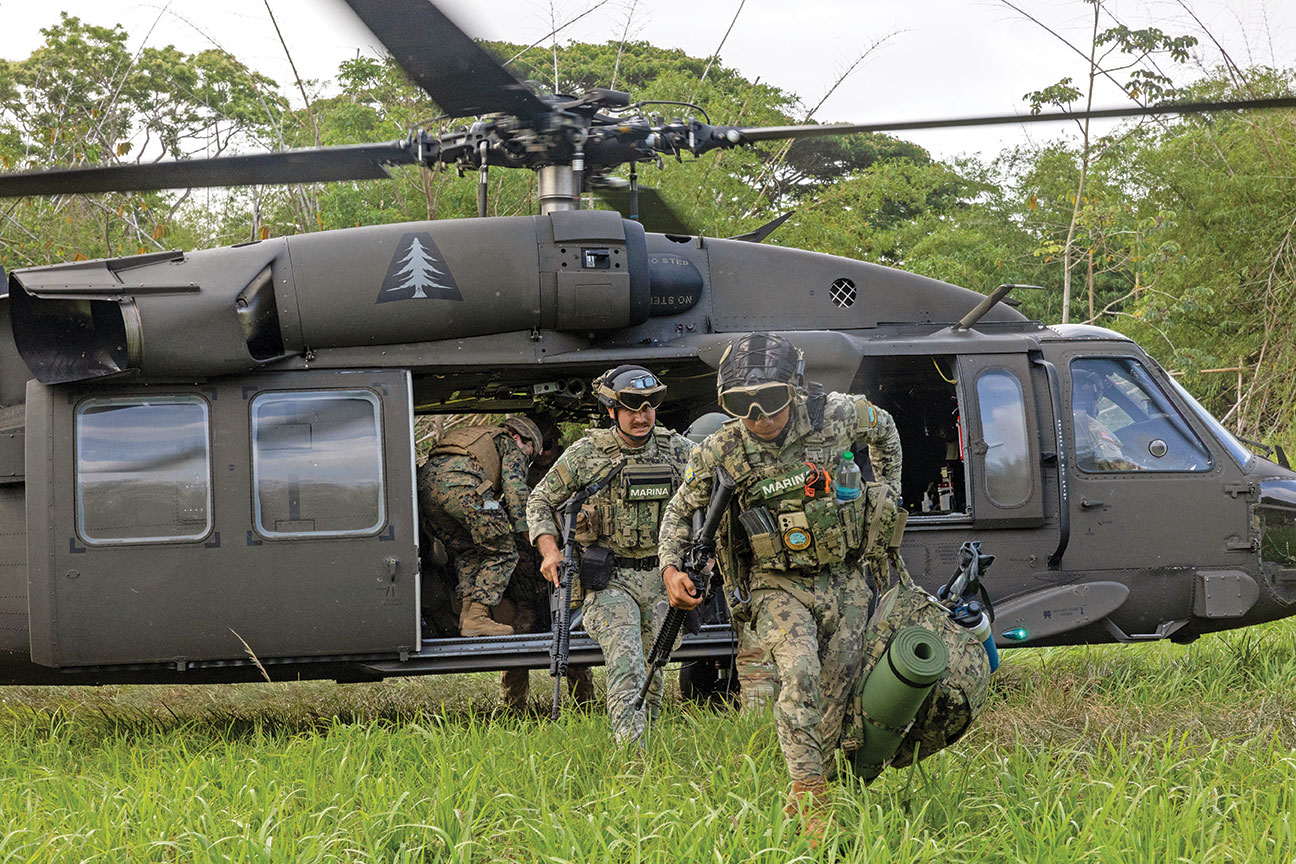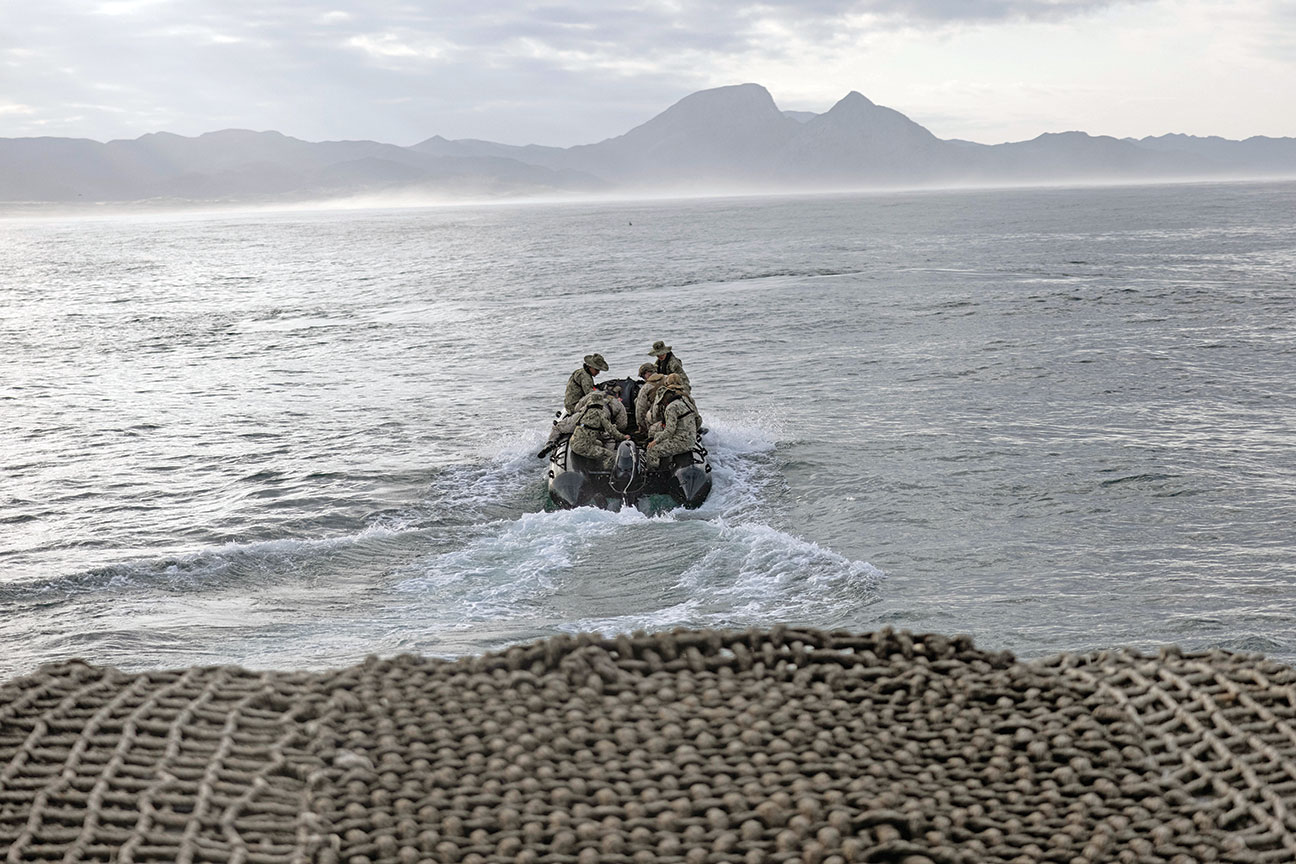The military relationship between Mexico and the United States continues to strengthen. Mexico’s Secretariat of National Defense (DEFENSA), Secretariat of the Navy (MARINA), and the United States Northern Command (USNORTHCOM) are continuing to engage in dialogue and joint exercises, enhancing collaboration toward a mutual strategic vision. Originating from the Bilateral Military Cooperation Roundtable, these bilateral institutions are shaping a unified approach to North American security across short-, medium- and long-term time frames.
The recent structural changes within Mexico’s defense and security apparatus will help clarify and bolster cooperation with the U.S. The reorganization of the National Guard under DEFENSA, alongside the Mexican Army and Air Force, has clarified each service’s roles and missions.
The Navy’s restructuring is set to enhance its global presence, leading to a deepening military collaboration with the U.S. In early 2024, MARINA began an analysis to incorporate the essential concepts, terms and vocabulary required for effective communication within the NATO framework. This signifies a pivotal shift toward aligning linguistic practices and facilitating better interaction without implying intention or membership in NATO. It harmonizes communication practices to enhance collaboration and understanding within the international defense community.

MARINA has announced its intention to restore a blue-water capability, which will help separate its external defense from its Coast Guard functions. In both cases, this is likely to lead to continued close cooperation with U.S. Navy and Coast Guard forces.
Over the past decade, both countries’ militaries have actively engaged in a series of confidence-building mechanisms. Regular meetings involving secretaries, general staff and border commanders have been instrumental in establishing mutual trust and fostering a cohesive institutional structure. This concerted effort aims to lay the foundation for a common strategic outlook and enhanced cooperation.
In growing operational sophistication, joint exercises have expanded. Examples include:
Fuerzas Amigas: 220 U.S. Soldiers and 300 Mexican Soldiers synchronized a joint response to a hypothetical natural disaster on the border.
Amalgam Eagle: Air Forces collaborated in an air interception exercise.
Joint Specialized Exercise: A seven-week exercise with binational company-level airborne forces at the National Training Center in Santa Gertrudis, Chihuahua. This exercise reciprocated the annual rotating exercise of the Joint Readiness Training Center in Fort Polk, Louisiana.

These joint exercises showcase the growing dimension and operational coordination between the military forces. Reciprocal airborne exercises are scheduled to grow from company- to battalion-level exercises in 2025, signaling an increase in the relationship from small- to medium-size joint forces. Exercises lead to more effective operations, such as the North American Maritime Security Initiative, a joint Royal Canadian Navy, Mexican Navy, and U.S. Coast Guard and Navy trilateral maritime exercise aimed at deterring organized crime at sea.
Beyond exercises, what is important is that neighbors are there for each other when it matters. In mid-January 2025, as the California wildfires raged, Mexican military units along with other Mexican federal agencies were deployed on Mexican Air Force C-27J Spartan and C-130 Hercules transport aircraft and helped firefighting and search and rescue operations. In an era of complex challenges, the Mexico-U.S. military relationship appears to be a solid bridge for serious, discreet and stabilizing understanding.

